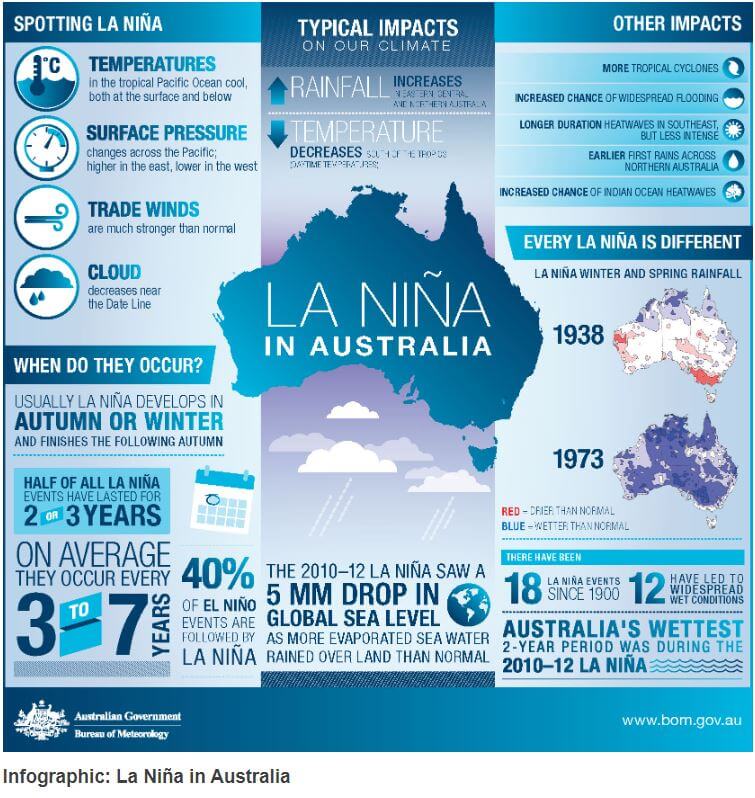Does climate change make La Niña?
La Niña is part of a natural cycle called the El Niño-Southern Oscillation, or “ENSO.” La Niña, and its counterpart, El Niño, have a strong influence on the year’s weather for most of the country. It’s a weather pattern that occurs in the Pacific Ocean. When the circulation is in La Niña, it picks up the warm water near Australia, carries it over the ocean east towards South America where it descends, and the deep cold water from South America is pushed west towards Australia. (An El Niño happens when the circulation is weaker or pushing in the opposite direction.)
La Niña is a weather pattern that occurs as a natural weather phenomenon. However, climate change impacts the severity and frequency of the impacts of La Niña such as increased rainfall, extreme temperature, earlier monsoon onset and tropical cyclones.
World Meteorological Organisation Secretary-General Prof. Petteri Taalas states, “human induced climate change amplifies the impacts of naturally occurring events like La Niña and is increasingly influencing our weather patterns, in particular through more intense heat and drought and the associated risk of wildfires – as well as record-breaking deluges of rainfall and flooding”.












